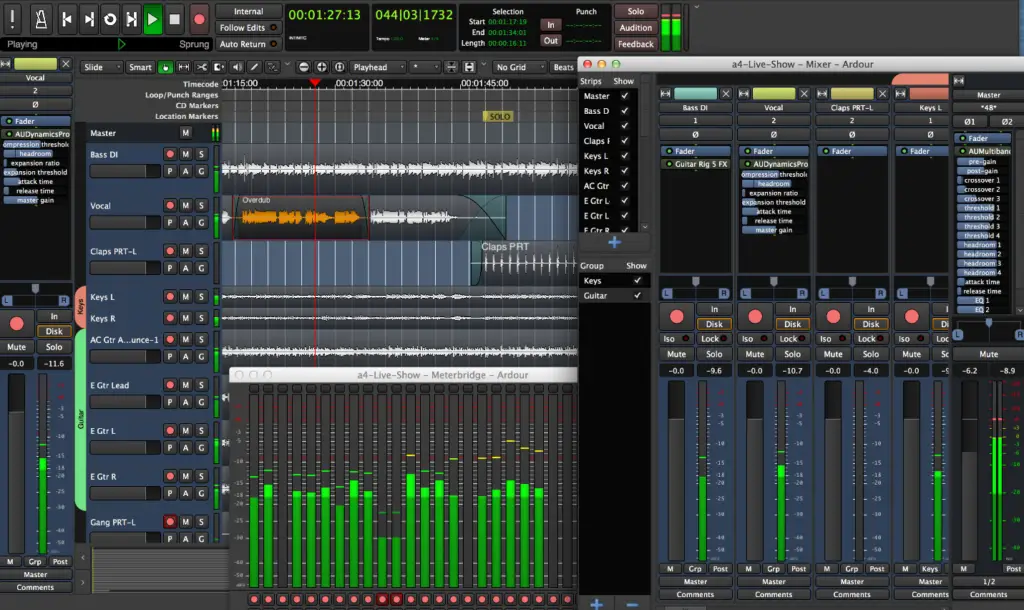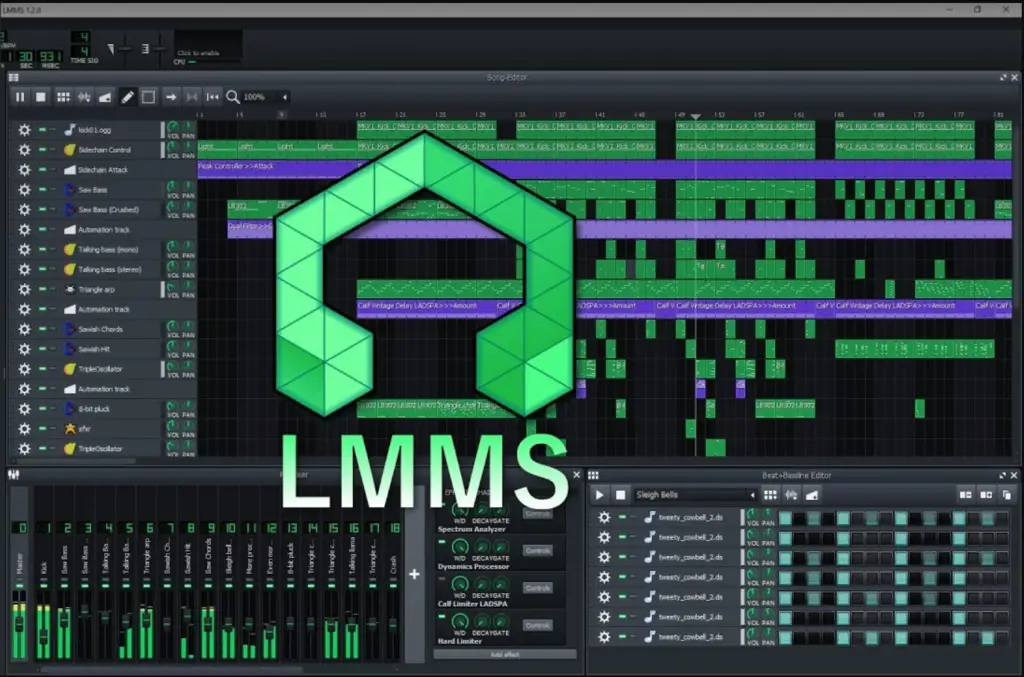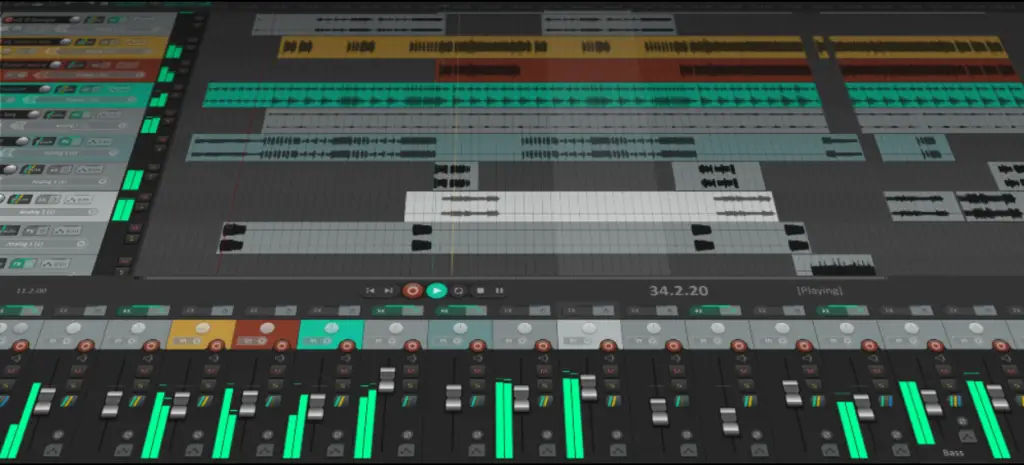Digital Audio Workstations (DAWs) are solely built for musicians and singers to generate, edit, and record audio files. Depending on the model, DAW applications provide various setting choices. Most of the DAWs are free and easy to use for all the well-known Linux distributions.
This article will discuss the top DAW with the key feature they offer, and their names are listed below.
1. Ardour
Ardour is an open-source, cross-platform DAW where users can compile it for their hardware by altering the source code. It is a professional-grade software widely used in music production for recording, editing, mixing, and mastering audio.

Features of Ardour:
- Capability to record and edit multiple tracks simultaneously
- Compatibility with various audio file formats
- Support for MIDI and virtual instrument plugins
- Built-in audio effects and processors
- Flexible mixing and routing capabilities
- Support for multiple hardware interfaces
- Advanced automation features
- Non-destructive audio editing
- Support for multiple languages
- Built-in support for LADSPA, LV2, and LinuxVST
- Unlimited undo and redo
Installing Ardour on Linux
To install Ardour on Linux you can run any of the following commands depending on the distribution that you are using:
$ sudo apt install ardour # For Ubuntu
$ sudo yum install ardour # For CentOS
$ sudo dnf install ardour # For Fedora
2. LMMS
LMMS is a free and open-source digital audio workstation (DAW) that allows users to compose, produce, and record music using virtual instruments, loops, and samples. It is a popular choice among music enthusiasts and hobbyists for its ease of use and powerful features.

Features of LMMS:
- Virtual instrument and effect support
- Built-in step sequencer for pattern-based music composition
- Support for MIDI and audio import/export
- Built-in mixer and mastering tools
- Support for LADSPA, VST, and VSTi plugins
- Automation of almost all elements
- Built-in sample editor and beat/bassline editor
- Support for song editor and piano roll
- Built-in SoundFont2 support
- Support for JACK, ALSA, and OSS audio systems
- Built-in live-performance mode
- Available for free under the GPLv2 license.
Installing LMMS on Linux
To install LMMS on Linux, you can run any of the following commands depending on the distribution you are using:
$ sudo apt install lmms # For Ubuntu
$ sudo yum install lmms # For CentOS
$ sudo dnf install lmms # For Fedora
3. Reaper
REAPER is a digital audio workstation (DAW) for Windows, macOS, and Linux. It is a powerful yet affordable and user-friendly software that professionals and amateurs use for recording, editing, mixing, and mastering audio. REAPER is known for its flexibility and customization options, making it a popular choice among music producers and audio engineers.

Features of Reaper
- Multi-track audio and MIDI recording, editing, and mixing
- Supports various audio file formats
- Built-in audio effects and processors
- Advanced automation features
- Non-destructive audio editing
- Support for multiple languages
- Flexible routing and sidechain capabilities
- Customizable user interface
- Support for ASIO, DirectSound, and WDM audio drivers
- Support for video playback and editing
Installing Reaper on Linux
To install Reaper on Linux, you need to type the below command for your respective distribution:
$ sudo snap install --edge reaper
4. Audacity
Audacity is a free, open-source digital audio workstation (DAW) for Windows, Mac, and Linux. It is widely used by musicians, podcasters, and audio engineers for recording, editing, and mastering audio. Audacity is known for its simplicity, ease of use, and powerful features, making it a popular choice among hobbyists and professionals.
Features of Audacity
- support for importing and exporting MIDI files
- Built-in audio effects and processors
- Advanced automation features
- Support for multiple languages
- Flexible mixing and routing capabilities
- Support for multiple hardware interfaces
- Available for free under the GPLv2 license
- Support for live recording audio, podcasts, and voiceovers.
- Built-in spectral analysis (frequency-domain editing) tools
- support for batch processing
- support for label tracks
- support for VAMP analysis plug-ins
Installing Audacity on Linux
To install Audacity on Linux, you can run any of the following commands depending on the distribution that you are using:
$ sudo apt install audacity # For Ubuntu
$ sudo yum install audacity # For CentOS
$ sudo dnf install audacity # For Fedora
Conclusion
The best DAWs for Linux are, Ardour, LMMS, REAPER, and Audacity. These DAWs are easy to use and are available for all famous Linux distributions. With various options, you can choose between free and open-source software or a paid version depending on your needs and budget. This post has briefly explained the best DAWs in Linux.
